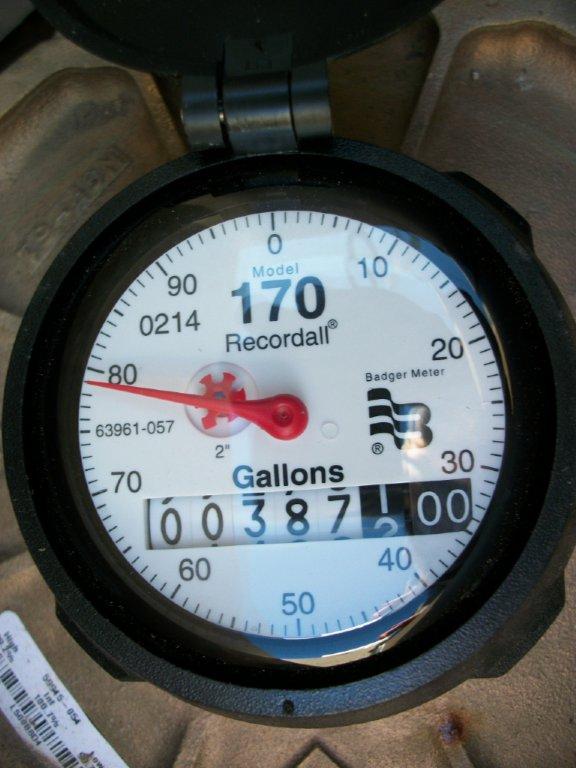If you are being over-charged by your water supplier, then you will need the numbers to prove it.
- Begin by looking at your water meter to determine the manufacturer and model number. Then obtain the manufacturer’s instructions for how to read the meter correctly. You can find this at the manufacturer’s website, and also usually find an online video which explains it.
- Take readings at least once per month around the same time when the utility says they are reading your meter. More frequent readings are better, in case you suspect they are not actually reading the meter on the same day as you are. Photos of the meter face with a time and date stamp are good evidence if you need it later. Be sure to use an organized method to record and store all the data which this process will generate.

We are familiar with several cases where water supply utilities over-charged for water service due to poor meter reading or accounting practices. However, consider the following items for a complete perspective:
- The most common cause of high charges for excessive water consumption is leaking pipes or excessive use on the customer’s side of the meter. Check for leakage by shutting off all water fixtures on the property, and then see if any flow indicators are still moving on the meter face. There should be no water flow at that point.
- Meters typically under-register as they wear out, so older meters are likely to read in the customer’s favor. Meters are relatively easy to replace, so this can be corrected if the utility agrees there might be a problem with meter accuracy.
- Many meters are either automatic-reading or remote-reading, and the likelihood of mis-reading these meters is small. Even if a manual meter-reader mis-reads the meter, it should be automatically corrected on the subsequent reading.
- Many utilities use an estimated-reading procedure, where they don’t actually read the meter on the date which is printed on your water bill. Instead, they project what the reading would be based on historic consumption, and any error will be corrected on subsequent readings.
What We've Seen in the Past
The wrong type or the wrong size of meter was installed. For example, a turbine meter should not be used in a location which requires a disk meter or multi-jet meter. The meter manufacturer’s website usually has the information for all of their products.
Two meters served the same property without the required backflow protection. Therefore, water was flowing into one meter and back out of the other. A meter which has reverse flow will not usually turn efficiently in the reverse direction. Therefore, the customer will not get full credit for water which is flowing back out to the serving utility. This is a condition which usually violates the original design criteria and would be considered to be a major defect in most water systems.
Two meters served the same property but they were connected in series instead of parallel. When the utility added up the flow from both meters, they were actually billing for the same water twice. This is easy to check by shutting off each meter individually and seeing if the other one still flows.
